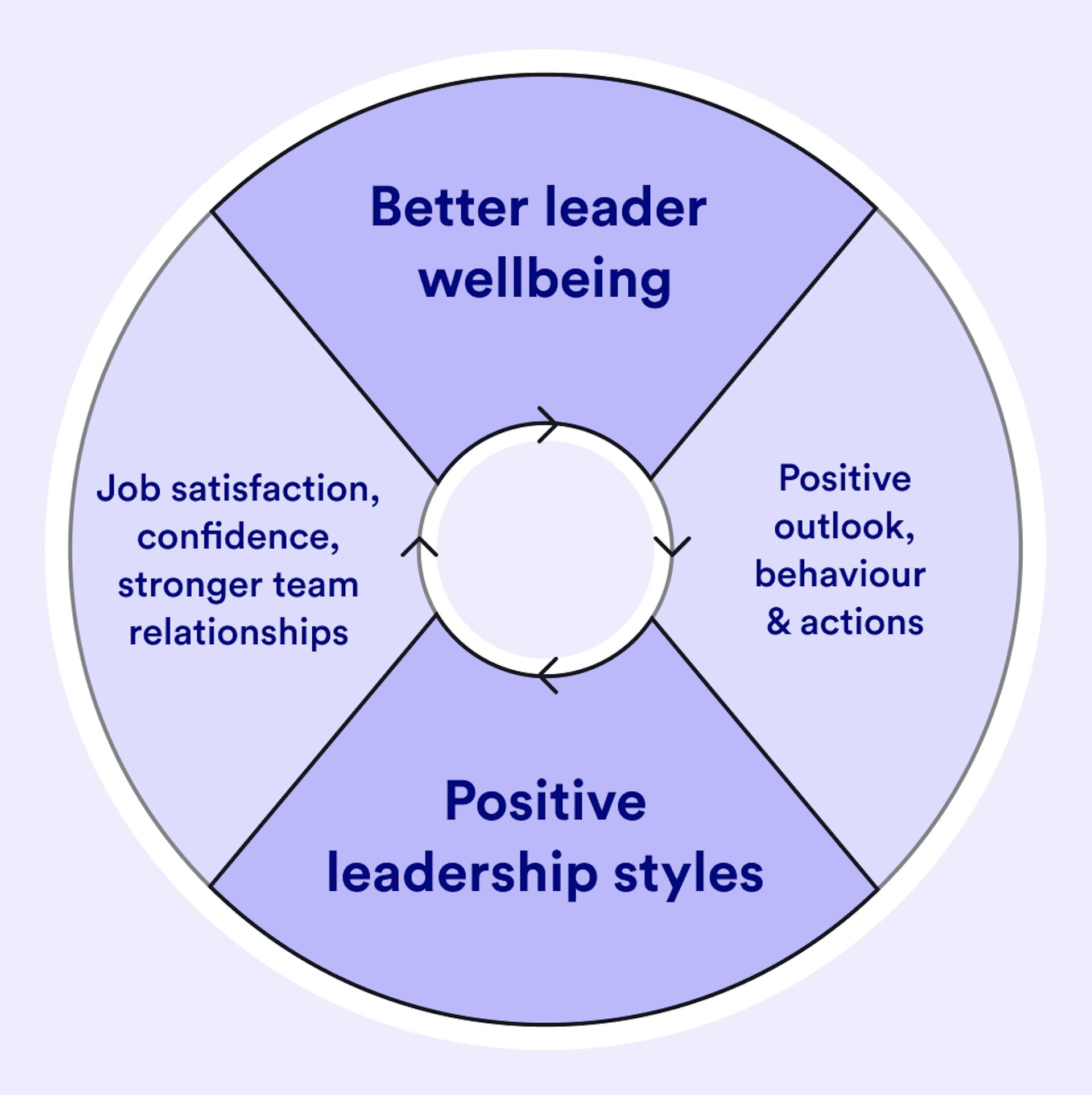The science of wellbeing and leadership

Dr. Jazz Croft

Content
- Leader health and team health
- Health-boosting leadership
- Negative leadership traits
- How do we break the cycle?
How we show up for our teams doesn’t just inspire their work; it has a big effect on their mental health. Research shows that leadership styles are predictive of employee mental health, and crucially, good leadership starts with good mental health. Here’s the latest insight and actionable next steps to make leadership part of wellbeing strategy.
Leader health and team health
We all aspire to be great leaders, but what part does our own mental health play in how we tackle leadership? According to recent studies, the answer is a lot. Manager wellbeing was shown to be a top predictor of leadership styles, even after taking demographics and sector differences into account.
When comparing personal wellbeing and workplace wellbeing, personal wellbeing was more strongly associated with leadership style. This means that if you want to know how well a manager is leading, the best question to ask may be, “How are you feeling?”

Health-boosting leadership
Now we know that there is a clear pathway from leadership to wellbeing, what are the leadership traits associated with better employee wellbeing? According to a large-scale scientific review, the top styles are:
- Transformational leadership – Leading with a vision. Transformative leaders are charismatic, encourage creative thinking, and care about the needs of their team.
- Goal-focused leadership – Leading with a laser focus on goals. Making tasks clear, regularly checking in, and steering towards progress.
Reflecting on how we can make these styles our norm can take practice, reflection, and monitoring across an organization to bring into focus what really works.
Negative leadership traits
Thanks to this research, we now also know the traits that put teams at psychological risk. By knowing what these traits are, we can move from gut instinct to knowing the evidence base around what has poor effects on employee health.
- Destructive leadership – Leaders who are aggressive, disregard company interests, and expose employees to potentially harmful behavior.
- Laissez-faire leadership – Leaders who are missing in action, avoiding decisions and hesitating to take action.
When leadership habits become challenging, this could be a warning sign of poor manager mental health. This means supporting good leadership could start with identifying ways to improve support and workplace culture.
How do we break the cycle?
The great news is that there are ways to put these insights into action and back the business case for better mental health.
Integrate mental health into professional development
Managers’ attitudes and feelings towards mental health guide how they look after themselves and treat others experiencing difficulties.
We know that managers are more likely to experience presenteeism (working while unwell) compared to their colleagues. This means leaders may be present at work but not getting the support they need and internalizing stigmas around seeking help.
Quick, actionable training resources can challenge these stigmas, help leaders reflect on their own health, and feel equipped to support employees facing challenges.
Make positive leadership the norm
What are the key traits that we can see from transformational and goal-focused leadership? We don’t need to adopt a single style of leadership all of the time, but bringing in these traits could boost your team.
Do you communicate your vision of success clearly? Are goals set out and reviewed regularly? Do employees feel open to taking risks and thinking creatively? Being open to change and adopting good habits is part of progressive leadership.
Treat poor leadership as a psychosocial hazard
Psychosocial hazards are elements of an organization that put your people at risk of psychological harm. These are far-reaching and include how we are treated by others and whether we’re put at risk of harassment and discrimination. Organizations must work to minimize the level of risk that employees are exposed to.
By framing negative leadership styles as a psychosocial hazard that increases the risk of burnout and stress, we can see how critical it is to tackle these issues head-on.
And the inspiring thing about good leadership is that it’s not only associated with fewer cases of poor mental health, but contributes to a more productive and flourishing work environment.
To learn more about increasing self-awareness and developing more empathetic leadership styles, read our 2023 Workplace Mental Health Trends report.